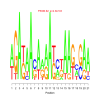Module 171 Residual: 0.17
| Title | Model version | Residual | Score |
|---|---|---|---|
| bicluster_0171 | v02 | 0.17 | -11.47 |
Displaying 1 - 21 of 21
| Cre01.g016300.t1.1 calmodulin-like 38 | Cre01.g016528.t1.1 haloacid dehalogenase-like hydrolase family protein |
| Cre01.g032300.t1.2 poly(A) binding protein 7 | Cre02.g073550.t1.2 nucleosome assembly protein1;1 |
| Cre02.g095044.t1.1 | Cre02.g098400.t1.2 |
| Cre02.g111700.t1.2 calcium-dependent protein kinase 15 | Cre02.g142246.t1.1 |
| Cre03.g171350.t1.2 SecY protein transport family protein | Cre03.g195388.t1.1 |
| Cre04.g217550.t1.1 eukaryotic translation initiation factor 3C | Cre06.g251400.t1.2 NADP-malic enzyme 3 |
| Cre06.g284100.t1.2 ammonium transporter 1;3 | Cre10.g430501.t1.1 Octicosapeptide/Phox/Bem1p (PB1) domain-containing protein / tetratricopeptide repeat (TPR)-containing protein |
| Cre10.g441550.t1.1 CBS domain-containing protein with a domain of unknown function (DUF21) | Cre12.g503650.t1.2 S-adenosyl-L-methionine-dependent methyltransferases superfamily protein |
| Cre12.g528000.t1.2 | Cre12.g533550.t1.1 Pyruvate kinase family protein |
| Cre13.g573900.t1.2 | Cre14.g611150.t1.2 Small nuclear ribonucleoprotein family protein |
| Cre16.g690130.t1.2 |
|
e.value: 1500 Motif Bicluster: Width: 21 Number of Sites: 1 Consensus: CAnACTtgTAnTtcAaTnAAT |
motif_0171_2Submitted by Anonymous (not verified) on Wed, 05/20/2015 - 14:16e.value: 2900 Motif Bicluster: Width: 21 Number of Sites: 1 Consensus: aGAgAAcAaaAtctAAgngAA |
Displaying 1 - 1 of 1
| Interaction | Weight | |
|---|---|---|
Displaying 1 - 1 of 1
| GO Terms | Descriptions |
|---|---|
| Not available |




Comments